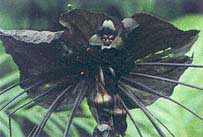
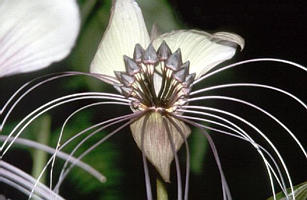
Tacca Chantrieri (left) and Tacca Nivea (right)
TACCA - TACCA -
TACCA
aka
The Bat Plant


Tacca Chantrieri (left) and Tacca Nivea
(right)
These are interesting, evergreen, perennial and herbaceous plants that grow wild in many tropical climates. They can be grown in humid, tropical greenhouses. T. pinnatifida (leontopetaloides) contains a lot of starch in its rhizomes, which, when extracted and prepared for food, is called East Indian Arrowroot or South Sea Arrowroot. The kinds in cultivation have creeping rhizomes or rootstocks and large, oval, crinkly foliage. The purplish-brown flowers are produced in bunches atop long, thick stems, 18 to 24 inches high. Long whiskers are suspended from the lovely flowers.
Growing Tacca from seed is not for the beginner - they require a lot of extra care. They are Tropicals!
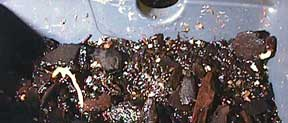 |
I am germinating Tacca Chantrieri
(Black) and Tacca Nivea (White) . In the picture at left, there are 2 Chantrieri germinating (one left, one top right corner).
|
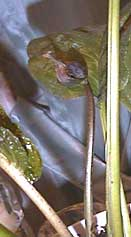 Bud growing on Tacca Chantrieri |
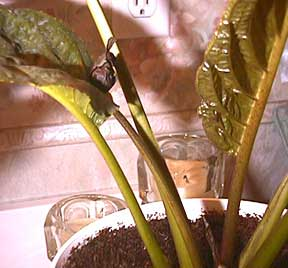 Bud growing on Tacca Chantrieri |
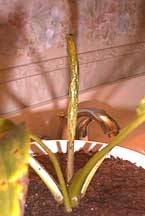 New leaf on Tacca Nivea |
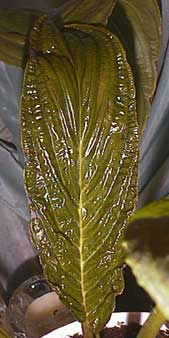 Opening leaf on Tacca Chantrieri - note the spinach type appearance. |
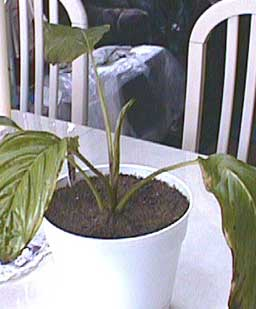 Tacca Nivea |
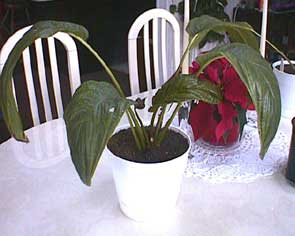 Tacca Chantrieri |
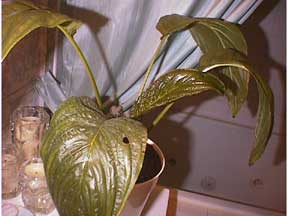 Tacca Chantrieri - leaves should be upright as above, not drooped over the pot. |
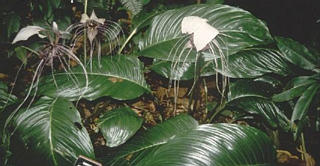 Tacca Nivea in bloom! |
ALL Photo's are copywrited. Please, do not use them without permission.
My tips and techniques for growing Tacca plants:
I am NOT an expert at growing Tacca. The tips below are what I found to work best for germination and growing for me.
Soak the seeds 24 hours in warm/hot water (hot enough that you can put your hand in). Use a thermos bottle to keep the water hot during this time.
Sow in trays, pots, etc. using a good seed starting mix in a propagator or warm place to maintain optimum temperature of 80-85F. It is essential that the soil temperature is high and kept steady. I use regular seed flats and clear plastic domes. I always place the flats on a propagation (heat) mat for additional bottom heat.
Sow 1/16 inch deep in good seed starting mix and seal the container using a polythene bag, cover with plastic wrap or use a clear dome to keep moisture in. I do not use regular potting soil - I have found it to be to heavy and does not allow the seeds to breathe or water to drain properly. Heavy soil can also cause the seed to damp off. I sprinkle a little bit of spag. moss on top to help retain moisture on the seed and mist them daily with warm to room temperature water. Bottom water can also be added to help promote good root structures, but don't drown them!
Germination can take from 1-9 months so BE PATIENT! do not toss out your seed beds thinking they won't germinate!
Care of Seedlings: transplant seedlings when they are large enough to handle into 3" pots using a good free draining compost with 10% added grit (sand). "Washed" Carpetner's Sand can be purchased at any home improvement store - be SURE its washed or the salts will damage your plant. Do not use beach sand. During the growing season (late spring to late summer) the plants need to be watered very regularly and the compost must we well drained. For fertilizer, I use Miracle Grow mixed 1/4 teaspoon to 1 gallon of water. Pot as required into larger pots, eventually to 8" pots. Give very little water through the winter and provide a temperature of 60-65 F. Summer temperature should be 75-85 F. Re-pot in February/March if needed and keep shaded from strong sun. As with any tropical, give the occasional mist spray through the summer.
New leaves will appear curled and with a spinach texture. This is normal. A good idea is to put the plant in your bathroom, turn on the hot shower and let the room steam up. Close the door and leave the light on overnight. This will perk up a Tacca quicker than anything I know. They love the moisture and heat! Tacca's are tropicals! They love the heat and moisture but they can be grown indoors in colder climates. They will require additional care to keep them warm and moist.
After the Tacca blooms, it will develop seed pods. These pods will remain on the plant for quite a long time. Once they dry out or fall, remove them and split them open to remove the seeds. Let the seeds dry only a few days. If a pod is accidently knocked off while it is still mushy, place it on a saucer and let the pod continue drying before opening it up to harvest the seeds. The fresher the seed, the better the germination. I've purchased seed from known seed companies and on eBay - all had poor germination. The age of the seed is an important factor in germination. One pod I opened had 6 seeds while another had 44!
Tacca's are known for damping off. Remember to use a good seed starting mix that has been treated for damp-off. If it still appears that your tiny seedling is failing, SIFT a small amount of good potting mix around the tiny stem for support, being very careful not to damage the stem! I always use the Miracle Grow potting mix - the extra dollar or two is well worth having a better soil. Continue with bottom heat and a covered dome until they have at least their second set of leaves.
Rhizomes can be divided at repotting time in the spring if needed.
Most photo's on this page are of my actual plants and may not be copied or reproduced without my expressed permission.
Where to get Tacca plants? it is very important to know where to get good, quality Tacca plants. The roots on the plants should be bright white and firm, not black, brown or soft. I've gotten them from two sources - http://www.sleepyoaks.com/ , and from a tropical nursery in the southern US. I would not buy from this nursery ever again, not a Tacca or any other plant. Their plants arrived wilted, holes in the leaves, root rotted and didn't last a month. It's been 7 months and the nursery still has NOT replaced the plants or issued a refund.
I HIGHLY RECOMMEND Sleepy Oaks!!! Sleepy Oak's plants arrived in excellent condition - nice crisp leaves, the root system was full, bright white and firm.
| Now, for the Technical
info on Tacca:
Tacca Chantrieri Andre` |
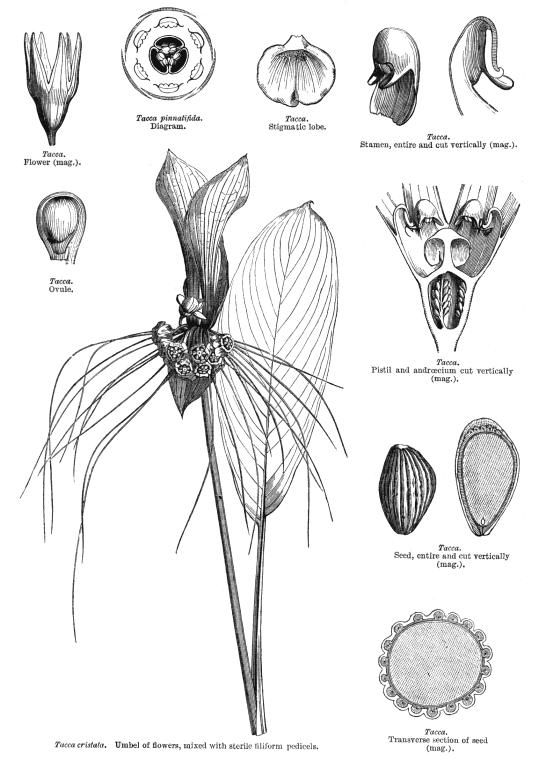 |
VARIETIES: T. Chantrieri (the Devil Flower); T. cristata aspera;
T. pinnatifida leontopetaloides.
Other species of Tacca:
Tacca chantrieri</i> André,
1901
Tacca cristata</i> Jack, 1821
Tacca esquirolii</i> (H.
Lév.) Rehder, 1936
Tacca gaogao</i> Blanco, 1837
Tacca
hawaiiensis</i> H. Limpr., 1928
Tacca integrifolia</i> Ker Gawl.,
1812
Tacca involucrata</i> Schumach. & Thonn., 1827
Tacca
laevis</i> Roxb., 1814
Tacca leontopetaloides</i> (L.) Kuntze,
1891
Tacca minor</i> Ridl., 1907
Tacca paxiana</i> H. Limpr.,
1928
Tacca pinnatifida</i> J.R. Forst. & G. Forst., 1775
Tacca
pinnatifida</i> subsp. <i>involucrata</i> (Schumach. &
Thonn.) H. Limpr., 1902
Tacca plantaginea</i> (Hance) Drenth,
1972
Tacca subflabellata</i> P.P. Ling & C.T. Ting, 1982